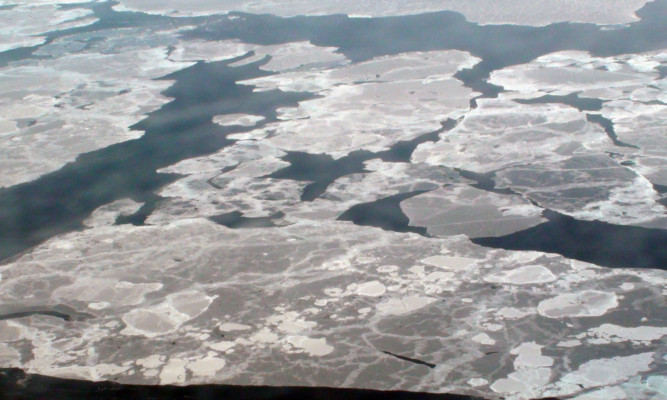Ships could be sailing right across the North Pole by the middle of the century, US experts predict.
By around 2050 the Arctic ice sheet will be thin enough for icebreakers to carve a straight path between the Pacific and Atlantic oceans, it is claimed.
“Nobody’s ever talked about shipping over the top of the North Pole,” said lead researcher Professor Laurence Smith, from the University of California at Los Angeles. “This is an entirely unexpected possibility.”
Meanwhile, cargo ships and tankers could routinely be making voyages through Arctic Ocean channels that are currently impossible for them to navigate on their own.
The scientists studied seven well-established climate simulations for the years 2040 to 2059 to estimate the future thickness of sea ice in the Arctic.
They then used a computer programme to look for potential new shipping routes opening up in September, the Arctic’s most navigable months of the year.
By mid-century most common open-water ships will be able, without the help of icebreakers, to cross the Northern Sea Route hugging the coast of Russia, the forecast shows. The route is about 40% shorter than a course through the Suez Canal.
Sailing directly over the North Pole would provide a passage for icebreakers between the world’s two greatest oceans 20% shorter than the Northern Sea Route.
Even the fabled and notoriously treacherous Northwest Passage, which traces Canada’s coastline, could be opened up to ordinary shipping, say the researchers. It is expected to become navigable for Polar Class 6 vessels which are strengthened against ice, and even some ships with unreinforced hulls.
Today, the Northwest Passage can only be crossed in one in every seven years on average, making it too unreliable for commercial shipping. But by 2050 the September sea ice is expected to melt to the point that it is accessible every other year.
For centuries the Arctic Ocean has captured the imagination of explorers because of the possibility of travelling between the Pacific and Atlantic oceans through the Bering Strait.
Until recently, thick ice has blocked this inviting short cut linking Asia with North America and Europe. But in the past two years, the ice has started to melt in late summer sufficiently to allow ordinary vessels escorted by icebreakers to venture into the Arctic. Last summer, a total of 46 voyages were successfully completed along the Northern Sea Route. The new research has been published online in the journal Proceedings of the National Academy of Sciences.
The predictions have major implications for commercial shipping, the exploitation of natural resources and the jurisdiction of shipping lanes.
